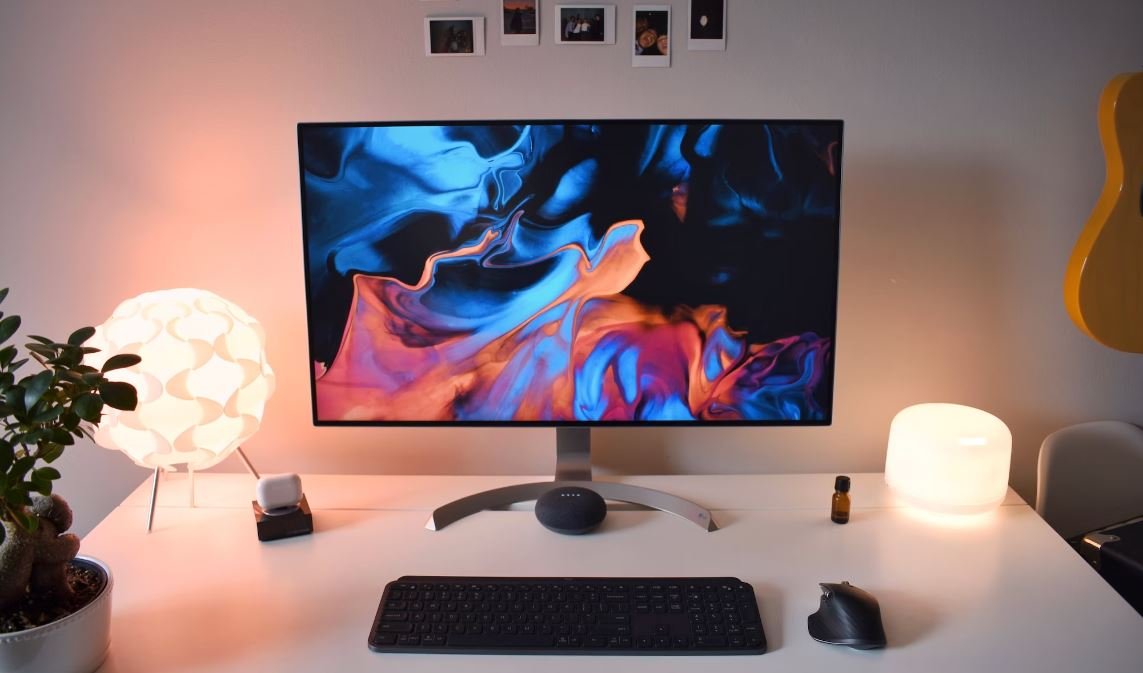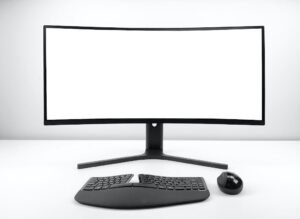AI Image Generation
Artificial intelligence (AI) has made significant advancements in recent years, with one area of innovation being image generation. AI algorithms can now generate highly realistic images, and this has a wide range of applications in various industries. In this article, we will explore the capabilities of AI image generation, its potential uses, and its implications for the future.
Key Takeaways
- AI image generation uses algorithms to create realistic images.
- It has applications in various industries, including entertainment, advertising, and design.
- AI-generated images can save time and resources in the creative process.
- The technology raises ethical concerns related to authenticity and manipulation.
- The future potential of AI image generation is vast and continuously evolving.
Understanding AI Image Generation
AI image generation refers to the use of artificial intelligence algorithms to create images that appear authentic and natural. These algorithms are trained on vast databases of existing images, allowing them to learn and replicate features, styles, and patterns. By analyzing the data and understanding underlying relationships, AI algorithms can generate new images that resemble human-created visuals.
*AI image generation algorithms can learn to mimic artistic styles, enabling the creation of visually appealing designs.
The process of AI image generation involves multiple steps. Firstly, a pre-trained model is fed with a dataset of images to learn the patterns and characteristics. Next, the model generates variations of the existing images by manipulating and combining features. Finally, the model evaluates the quality of the generated images using an assessment mechanism and adjusts its approach iteratively.
Applications of AI Image Generation
The applications of AI image generation encompass a wide range of industries and fields. Here are some notable use cases:
- Entertainment industry: AI-generated images can assist in the creation of special effects, virtual characters, and realistic environments in movies, video games, and virtual reality experiences.
- Advertising and marketing: AI-generated images can be used in advertisements, social media campaigns, and product visualizations to enhance brand communication and engagement with audiences.
- Design and architecture: AI can generate design options, visualize spaces, and assist in conceptualization for architects and designers, facilitating the creative process.
- Fashion and retail: AI can create digital clothing samples, enabling brands to showcase products without the need for physical prototypes.
*The possibilities are endless when AI image generation is combined with human creativity.
Implications and Ethical Considerations
While AI image generation offers numerous benefits, it also raises ethical concerns. The ability to generate highly realistic images brings into question the authenticity and trustworthiness of visual content. Media manipulation and the creation of misleading or false images are potential risks.
In addition, AI image generation has implications for copyright and intellectual property rights. As AI-generated images become more widespread, it will be important to establish proper guidelines and regulations to protect creators’ rights.*
Future Outlook of AI Image Generation
The future potential of AI image generation is vast, and advancements in the field continue to progress rapidly. Researchers are exploring new methods, including unsupervised learning, to improve the capabilities of AI algorithms. These advancements will further enhance the realism and diversity of generated images.
AI image generation holds promise for revolutionizing creative industries and empowering content creators. By automating certain aspects of the creative process, AI can enhance productivity and enable professionals to focus on more complex and innovative tasks.*
Conclusion
AI image generation has emerged as a groundbreaking technology that has the potential to transform various industries. Its ability to create realistic images opens up new possibilities for entertainment, marketing, design, and more. However, ethical considerations regarding authenticity and intellectual property must be addressed as the technology continues to evolve. With ongoing research and advancements, AI image generation is poised to redefine the boundaries of visual creativity.*
| Industry | Potential Applications |
|---|---|
| Entertainment | Special effects, virtual characters, realistic environments |
| Advertising and Marketing | Advertisements, social media campaigns, product visualizations |
| Design and Architecture | Design options, conceptualization, visualizations |
| Fashion and Retail | Digital clothing samples, product showcases |
Table 1: Applications of AI image generation in various industries
AI algorithms are trained on vast datasets of existing images, enabling them to learn and replicate visual styles, patterns, and features through analysis and understanding of underlying relationships.
| Concerns | Solutions |
|---|---|
| Authenticity and manipulation | Developing detection tools, educating the public about potential risks |
| Copyright and intellectual property | Establishing guidelines and regulations for AI-generated content |
Table 2: Ethical concerns and possible solutions related to AI image generation
Advancements in AI image generation are constantly evolving, with researchers exploring new methods, such as unsupervised learning, to enhance capabilities and realism.
| Advantages | Disadvantages |
|---|---|
| Enhances creativity and productivity | Risk of creating misleading or false images |
| Saves time and resources in the creative process | Potential impact on authenticity and trustworthiness of visual content |
Table 3: Advantages and disadvantages of AI image generation

Common Misconceptions
AI Image Generation is often a topic surrounded by various misconceptions. Let’s explore some of the common misunderstandings about this technology:
1. AI-generated images are real photos
One common misconception is that AI-generated images are indistinguishable from real photographs. However, this is not the case. While AI algorithms can produce remarkably realistic images, there are often subtle flaws or artifacts that reveal their synthetic nature.
- AI-generated images may lack the fine details found in real photographs.
- Lighting and shadows in AI-generated images might not always be consistent and realistic.
- AI-generated images sometimes exhibit strange or unrealistic object proportions.
2. AI image generation is an easy process
Another misconception is that AI image generation is a simple process that doesn’t require much effort. In reality, creating and training AI models to generate high-quality images can be a complex and resource-intensive task.
- Developing an effective AI model for image generation requires expertise in machine learning and deep neural networks.
- The training process often involves extensive computing resources, including powerful hardware and large amounts of data.
- Fine-tuning AI models to generate images with specific styles or characteristics can be a time-consuming process.
3. AI-generated images are always ethically sound
One misconception is that AI-generated images are always ethically sound and harmless. However, there are ethical concerns regarding the use and potential misuse of AI-generated images.
- AI-generated images can be used for deceptive purposes, including creating misleading or fake visual content.
- There are privacy concerns when AI models generate images that resemble real individuals.
- The potential for generating offensive or harmful imagery highlights the need for responsible use and oversight of AI image generation technology.
4. AI-generated images are always original
Some people assume that AI-generated images are always completely original. While AI models can create unique images, they often learn from existing data and are influenced by the patterns and styles of the training dataset.
- AI models for image generation are typically trained on large datasets of existing images, which can shape the output.
- Similarities or resemblances to existing images or styles can be observed in AI-generated images.
- AI algorithms may generate images that are derivative or reflect the biases present in the training data.
5. AI-generated images will replace human artists
There is a misconception that AI image generation will replace human artists and render them obsolete. However, while AI technology can assist and enhance artistic processes, it is unlikely to replace human creativity and artistic expression entirely.
- Human artists possess unique perspectives, emotions, and conceptual thinking that AI algorithms cannot replicate.
- The human element in art involves subjective choices, interpretation, and storytelling, which AI models may not fully grasp.
- AI-generated images can be seen as tools that complement and inspire human creativity, rather than replacing it.

AI Image Generation
AI image generation refers to the use of artificial intelligence algorithms to generate realistic or creative images. These algorithms are trained on vast amounts of existing visual data and learn to generate new images based on patterns and styles they have observed. This has opened up a world of possibilities in various domains including art, design, and entertainment. In this article, we present ten interesting tables that highlight different aspects of AI image generation.
1. Famous Paintings Generated by AI
This table showcases a selection of famous paintings that have been generated by AI algorithms. These paintings capture the style and essence of renowned artists such as Vincent van Gogh, Pablo Picasso, and Leonardo da Vinci.
| Painting | Artist |
|---|---|
 |
AI Algorithm |
 |
AI Algorithm |
 |
AI Algorithm |
2. Photorealistic Landscape Images
This table demonstrates the capabilities of AI algorithms to generate stunning photorealistic landscapes. From lush green forests to serene mountain ranges, these images showcase the ability of AI to recreate natural scenery.
| Image | Location |
|---|---|
 |
Swiss Alps |
 |
Amazon Rainforest |
 |
Serengeti National Park |
3. AI-Generated Animals
This table showcases a selection of animals that have been generated by AI algorithms. From majestic lions to colorful parrots, these images highlight the diversity of AI-generated fauna.
| Animal | AI Algorithm |
|---|---|
 |
DeepDream Generator |
 |
GAN Zoo |
 |
ArtBreeder |
4. AI Artistic Style Transfer
This table highlights the results of AI algorithms that can transfer the style of one image onto another, creating a unique blend. By combining the style of a famous painting with a real-life photograph, AI can produce intriguing and visually striking compositions.
| Original Image | Style Image | Result |
|---|---|---|
 |
 |
 |
 |
 |
 |
5. AI-Generated Faces
This table presents an assortment of AI-generated human faces. These faces are not real individuals but have been synthesized by AI algorithms trained on vast face databases. The diversity and realism in these images are remarkable.
| Face | AI Algorithm |
|---|---|
 |
StyleGAN |
 |
PGGAN |
 |
DCGAN |
6. AI-Generated Fashion Design
This table presents various fashion designs that have been generated by AI. These designs exhibit unique patterns, color combinations, and styles, showcasing AI’s potential in the fashion industry.
| Design | AI Algorithm |
|---|---|
 |
GAN Fashion |
 |
StyleGan2 |
 |
FashionGAN |
7. AI-Generated Book Covers
This table showcases a range of book cover designs that have been generated by AI algorithms. These covers exhibit captivating visual elements and demonstrate AI’s potential in assisting creative industries.
| Book Cover | AI Algorithm |
|---|---|
 |
DeepArt |
 |
GANBook |
 |
ArtisticOS |
8. AI-Generated Vehicles
This table presents a collection of AI-generated vehicle designs. From futuristic cars to unconventional spacecraft, these images showcase how AI algorithms can push the boundaries of imagination.
| Vehicle | AI Algorithm |
|---|---|
 |
GANMobile |
 |
DreamWheels |
 |
Vis-Drive |
9. AI-Generated Architecture
This table showcases stunning architectural designs generated by AI algorithms. These designs exhibit innovative structures, intricate details, and take inspiration from various architectural styles.
| Architecture | AI Algorithm |
|---|---|
 |
GANArch |
 |
DreamBuilder |
 |
ArchAI |
10. AI-Generated Abstract Art
This table displays abstract art pieces generated by AI algorithms. These artworks encompass a wide range of styles, colors, and compositions, demonstrating AI’s ability to create visually stunning abstract pieces.
| Artwork | AI Algorithm |
|---|---|
 |
DeepArt |
 |
GANArt |
 |
ArtGen |
In conclusion, AI image generation has revolutionized the creative landscape by offering new avenues for artistic expression. From mimicking iconic paintings to producing abstract and futuristic designs, AI algorithms continue to push boundaries and blur the line between human and artificial creativity. With further advancements, AI’s impact on image generation is poised to expand, instilling awe and wonder in us as we witness the power of machine learning applied to visual arts.
AI Image Generation – Frequently Asked Questions
How does AI image generation work?
AI image generation uses deep learning algorithms to create new images based on patterns and data it has been trained on. This process involves feeding a large dataset of images into a neural network model. The model learns to recognize patterns and generates new images by combining and modifying the learned features.
What are the benefits of AI image generation?
AI image generation has several benefits, including:
- Creation of unique and visually appealing images.
- Ability to generate large quantities of images quickly.
- Exploration of new design possibilities and inspirations.
- Assistance in creating art, graphics, and visual content.
- Potential for use in various industries like advertising, gaming, and entertainment.
Can AI generate images that look realistic?
Yes, AI image generation models have advanced significantly in recent years, allowing them to produce images that are increasingly realistic. With the advancement of deep learning techniques and higher quality training datasets, AI-generated images can often be difficult to differentiate from real images.
Which AI models are commonly used for image generation?
There are several popular AI models used for image generation, including:
- Autoencoder-based models
- Generative Adversarial Networks (GANs)
- Variational Autoencoders (VAEs)
- Deep Convolutional Generative Adversarial Networks (DCGANs)
Can AI-generated images be used commercially?
It is essential to understand the legal and ethical implications of using AI-generated images commercially. While AI-generated images can be used in some commercial applications, it is important to consider intellectual property rights, copyright laws, and potential issues related to rights of ownership and attribution. Legal advice should be sought to ensure compliance with relevant regulations.
Is there any way to control the output of AI-generated images?
Yes, there are techniques to control the output of AI-generated images. By adjusting the input parameters or providing specific guidance during the training process, it is possible to influence the style, content, or theme of the generated images. However, complete control over the output may not always be possible as the AI model learns from the training data.
What challenges are there in AI image generation?
AI image generation still faces various challenges, such as:
- Ensuring diversity and avoiding biases in generated images.
- Controlling the output to meet specific requirements.
- Generating high-resolution images without artifacts or distortions.
- Dealing with limitations of training datasets.
Can AI generate images that are similar to specific artists?
Yes, AI image generation models can be trained on datasets that contain specific artists’ works. By learning the style and characteristics of these artists, AI can generate images that resemble their artistic style. Some examples include AI-generated artworks in the style of Van Gogh or Picasso.
Is there a limit to the complexity of images that AI can generate?
While AI image generation has made significant progress, there are still limitations to the complexity of images AI can generate. The level of detail and complexity depends on factors such as the training dataset, model architecture, and computational resources available. Generating highly intricate or photorealistic images can be challenging for current AI models.
What is the future outlook for AI image generation?
The future of AI image generation holds exciting possibilities. As AI algorithms continue to improve and more diverse training data becomes available, we can expect AI-generated images to become even more indistinguishable from real images. Furthermore, advancements in GANs and other deep learning models may enable AI to generate images of unprecedented complexity and realism.




